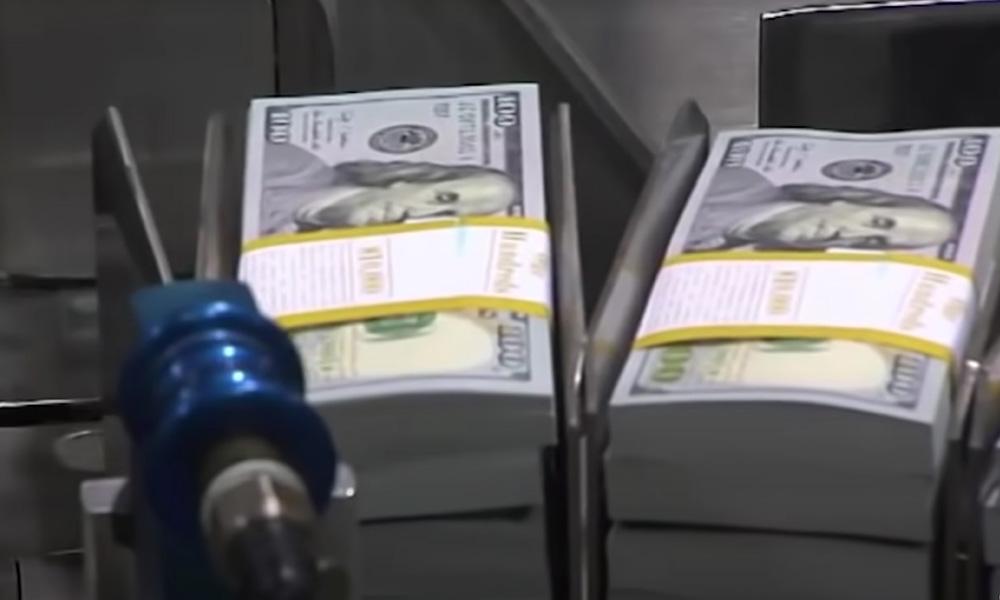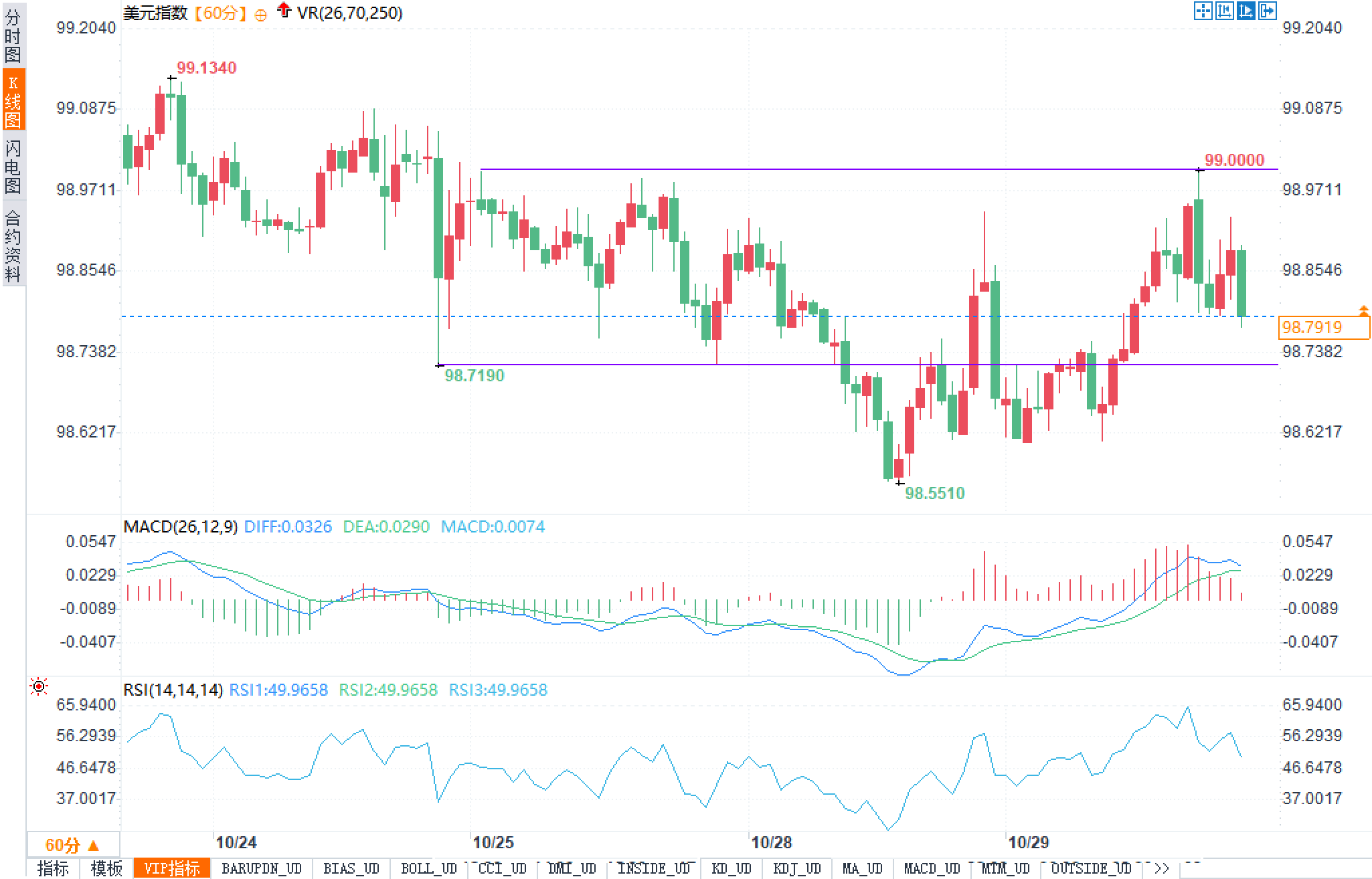The night of the resolution was full of tricks: would it fall first and then rise, or continue to rise? The US dollar only had 30 seconds to react.
2025-10-29 22:05:06

What truly matters is Chairman Powell's wording at the press conference—whether he defines the rate cut as a "precautionary adjustment" or moves towards a more continuous easing path; and how the committee communicates its policy path for the year and the following year. During the data gap caused by the government shutdown, market sentiment is amplified in its sensitivity to language, and the marginal reaction of the dollar therefore depends more on expectation gaps than on the individual decision itself.
From a macroeconomic perspective, if this interest rate cut is implemented as expected, it will lower the target range for the federal funds rate to 3.75%–4.00%. Nominal growth remained relatively strong, but signs of softening in the employment sector are accumulating: several large companies have announced optimizations for white-collar positions, and while artificial intelligence and automation are improving efficiency, they are also reducing demand for traditional jobs. Correspondingly, while the monthly decline in inflation is partly due to structural disruptions following the tariff shock, the slowdown in core price momentum is still more likely to influence the "risk balance" rhetoric in policy communications.
The policy agenda is not monolithic. At least one official may support a larger rate cut of 50 basis points to more quickly offset the risk of weak employment, reminding the market that there is still a significant disagreement within the committee regarding the trade-off between "preventing an economic downturn" and "preventing a rebound in inflation." Regarding the dot plot and forward guidance, the previous inclination towards two rate cuts this year is largely established, but the real battleground is in 2026: if the Fed only provides a relatively restrained cumulative easing, while interest rate swaps and forward pricing bet on deeper rate cuts—this misalignment will become a key variable in the medium-term direction of the dollar. If the "official path" is significantly slower than the "market path," the front-end yield of US Treasury bonds may rebound in the short term, and the dollar may have room for a period of strengthening; however, if the guidance signals "greater concern about the labor market," a widening term spread and a decline in nominal interest rates will put pressure on the dollar.
It is also necessary to pay attention to the potential inflection point in balance sheet policy. If this communication clearly indicates that quantitative tightening (QT) is nearing its end, and reinvestment is more inclined towards short-duration Treasury bonds, then the transmission mechanism of interest rates at both ends will undergo subtle changes: on the one hand, a decline in the term premium will help suppress medium- and long-term yields and stabilize the financing environment; on the other hand, the marginal decline in front-end real interest rates will weaken the attractiveness of the dollar's risk-free returns through the interest rate differential channel. For the dollar index, this combination of "duration-friendly, dollar-unfriendly" often gradually manifests itself over several weeks after the policy is implemented, rather than being realized all at once on the night of the decision.
The US government shutdown has entered its third week, causing delays in the release of official employment and some price data. Lacking authoritative "anchors," the market relies more on corporate announcements, job postings, and layoff data—unofficial indicators—to calibrate fundamentals. This "data blind spot" amplifies the influence of communication tone and can easily lead to excessive volatility in the dollar during press conferences, where any statement seems to trigger a reaction. In the short term, if Powell emphasizes that "inflation remains sticky, there are healthy divisions within the committee, and there is no need to commit to further rate cuts in December," this would contradict market bets on continuous easing, potentially giving the dollar a hawkish surge. Conversely, if he clearly releases a framework of "depending on employment, with a tendency to cut rates again this year," the dollar's rebound momentum is likely to be limited.
Trading Structure and Technical Analysis
Positions before the FOMC meeting are typically kept conservative, with options used to hedge the two-way risk of the press conference's implications. If Powell downplays the probability of another rate cut in December, the dollar's rise will likely be driven by short covering and passive buying from quantitative models, with its sustainability depending on whether the repricing of "longer and higher" rates in the following days can extend to front-end real interest rates. If he emphasizes the fragility of the employment market or hints at "approaching the neutral interest rate," the dollar's decline is more likely to be reflected in a linkage between "interest rate differential compression + risk asset sentiment recovery," usually unfolding in a phased rather than unilateral manner. It is important to emphasize that during the data-free window, any single wording is more likely to trigger a cycle of "over-interpretation - return to fundamentals," potentially amplifying the daily volatility of the dollar index, but the median trend still depends on the resumption of the release of employment, wage, and service sector inflation indicators.
The hourly candlestick chart shows that after falling from the previous high of 99.1340, the index formed a rectangular trading range between 98.72 and 99.00. The upper edge is close to the psychological resistance level of 99.00, while the lower edge is around the static support level of 98.7190. The current price is near the midpoint of this range, reflecting the "price magnetism" in a consolidating market. The short-term low of 98.5510 forms a second line of defense below the range; a break below this level would trigger a pullback and retest of the previous rebound.

In terms of indicators, the MACD (26,12,9) has DIFF=0.0326, DEA=0.0290, and histogram value=0.0074, which are slightly positive and DIFF is slightly higher than DEA, indicating that the bullish momentum is recovering but the magnitude is limited; RSI (14) is at 49.9658, which is a typical neutral range. Combining the resonance of pattern and indicators, only if it breaks through and effectively stands at 99.00 can it be expected to launch a retest of 99.1340; conversely, if it is continuously defeated below 99.00 and falls back to 98.72, the range oscillation logic will continue, and 98.5510 will become an important observation level below. It is worth noting that the probability of "gap/false breakout" increases on the night of the interest rate meeting, and the second confirmation after the first high-volume positive/negative line is more critical.
Conclusion
The current short-term risk balance for the US dollar is slightly biased towards an "upside surprise": as long as the press conference rhetoric doesn't materialize into the market's strong bets on continued easing, the dollar may find support due to this expectation gap. However, looking at a longer assessment period, the endogenous cooling of the job market, the cyclical contraction in corporate employment, and the efficiency inflection point brought about by AI are all likely to continue to depress the central level of wage and service inflation in the coming months. When official data resumes release and confirms this trend, the market may push the interest rate cut path even deeper, and the medium-term downward pressure on the dollar will increase accordingly. If quantitative tightening officially ends and shifts towards short-duration reinvestment, the medium-term interest rate differential support for the dollar will further weaken, a point worth continued monitoring.
In conclusion, the impact of this meeting on the US dollar index is more like a game of rhetoric and strategy: the decision itself was already fully priced in; what truly changed the direction was the Fed's choice of rhetoric regarding its December and 2026 strategies, and the reordering of the weighting of employment and inflation risks. In the short term, the dollar may receive a technical boost due to the "hawkish rate cut," but if subsequent data confirms a cooling labor market, interest rate differentials will be unlikely to sustain a long-term hold on the dollar.
- Risk Warning and Disclaimer
- The market involves risk, and trading may not be suitable for all investors. This article is for reference only and does not constitute personal investment advice, nor does it take into account certain users’ specific investment objectives, financial situation, or other needs. Any investment decisions made based on this information are at your own risk.





















